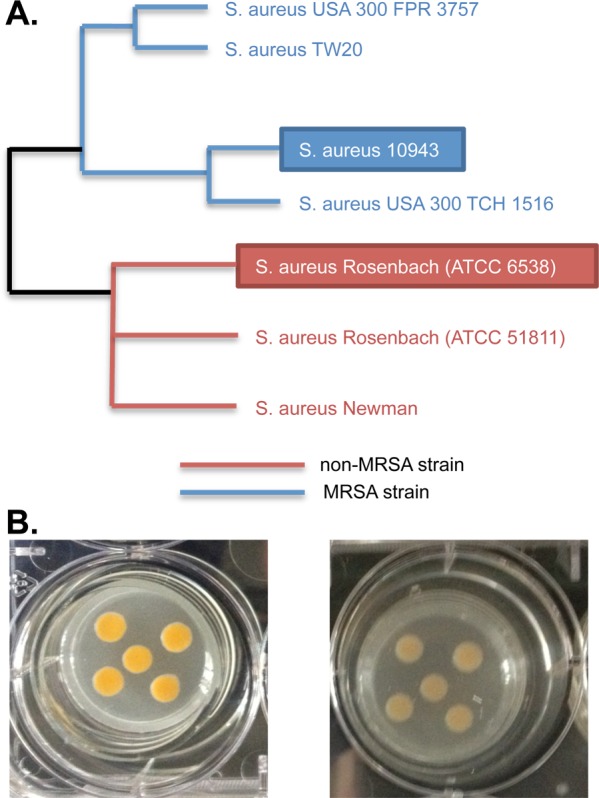Figure 1.

Two phylogenetically distinct strains of S. aureus have unique pigmentation. (A) Phylogenetic separation of S. aureus 6538 and S. aureus 10943 indicates that S. aureus 10943 is most closely related to common CA-MRSA strains, while S. aureus 6538 is most closely related to non-MRSA strains. Blue lines indicate phylogenetic branches associated with methicillin resistance and red lines indicate phylogenetic branches associated with S. aureus species with no known antibiotic resistance. Black lines indicate parent phylogenetic branches.26 (B) Two phylogenetically dissimilar strains of S. aureus were inoculated onto tissue culture inserts and grown as biofilms in six-well tissue culture plates at 37 °C. Every 24 hours, feeder medium was refreshed within the plate well. Images represent mature biofilms that have been cultured a total of 72 h to reach linear growth phase (referred to as the T0 biofilm growth time point). Left panel depicts the chronic wound isolate, MRSA strain S. aureus 10943 and right panel depicts the lab-adapted, MSSA strain S. aureus “Rosenbach” ATCC 6538.
